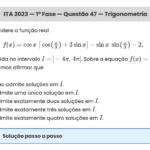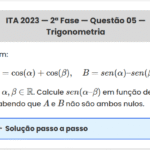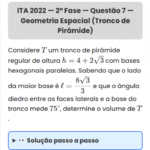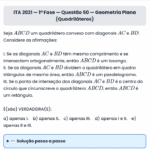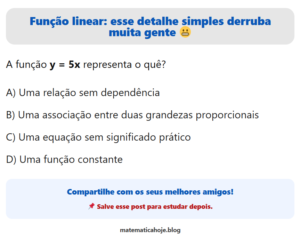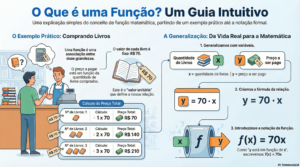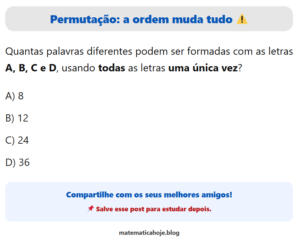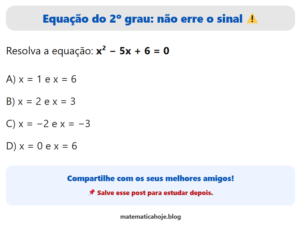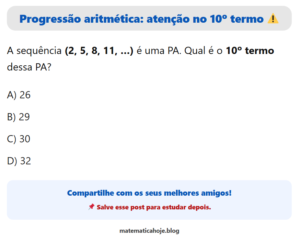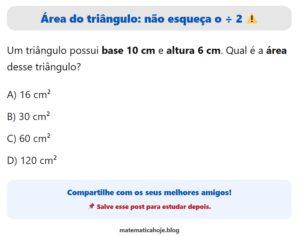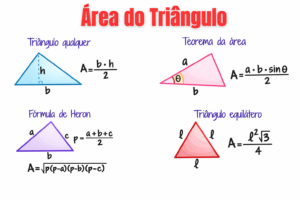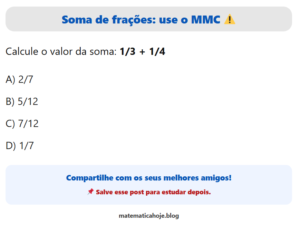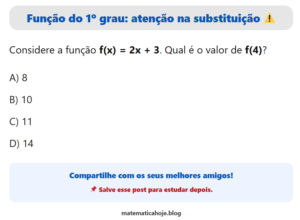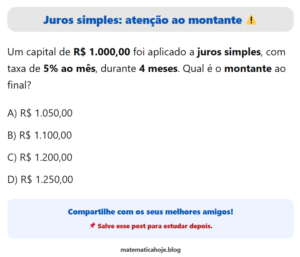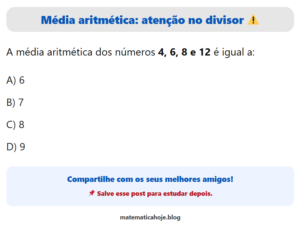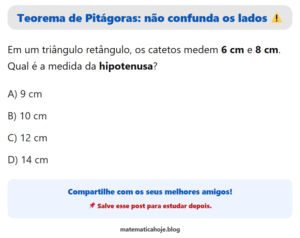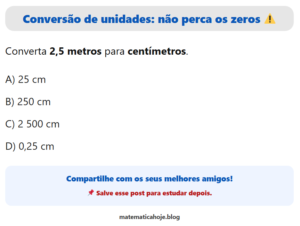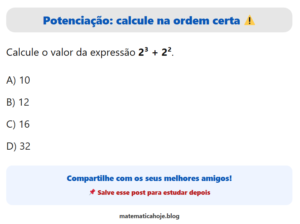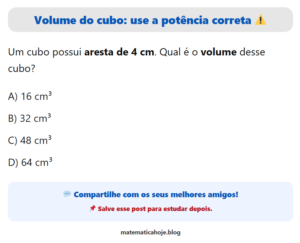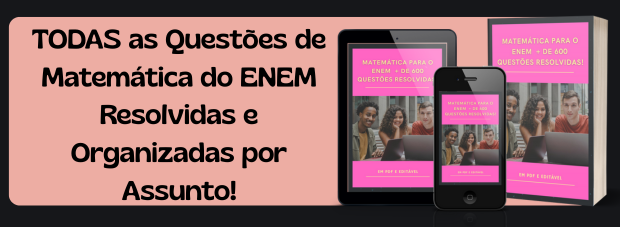ITA 2022 — 2ª Fase — Questão 2 — Números Complexos
Seja \(z\in\mathbb{C}\) e denote por \(\Im(z)\) a parte imaginária de \(z\).
Determine todos os possíveis \(z\in\mathbb{C}\) com \(\Im(z)\neq 0\) tais que
\[
\Im(z^{3})=0 \quad\text{e}\quad \Im\big((1+z)^{3}\big)=0.
\]
👀 Solução passo a passo
Escreva \(z=a+bi\) com \(a,b\in\mathbb{R}\) e \(b\neq 0\). Sabemos que
\[
(x+iy)^3=(x^3-3xy^2)+i\,(3x^2y-y^3).
\]
1) Condição \(\Im(z^3)=0\):
Para \(x=a\) e \(y=b\), \[ \Im(z^3)=3a^2b-b^3=b\,(3a^2-b^2)=0. \] Como \(b\neq 0\), segue que \[ \boxed{\,b^2=3a^2\,}. \tag{I} \]
2) Condição \(\Im((1+z)^3)=0\):
Agora \(1+z=(a+1)+bi\Rightarrow x=a+1,\;y=b\). \[ \Im\big((1+z)^3\big)=3(a+1)^2b-b^3=b\,[3(a+1)^2-b^2]=0. \] Como \(b\neq 0\), \[ \boxed{\,b^2=3(a+1)^2\,}. \tag{II} \]
3) Conclusão:
De (I) e (II): \(3a^2=3(a+1)^2\Rightarrow (a+1)^2=a^2\Rightarrow 2a+1=0\). Logo, \[ a=-\frac{1}{2},\qquad b^2=3a^2=\frac{3}{4}\Rightarrow b=\pm\frac{\sqrt3}{2}. \] Portanto, \[ z=-\frac{1}{2}\pm i\,\frac{\sqrt3}{2}. \]
Para \(x=a\) e \(y=b\), \[ \Im(z^3)=3a^2b-b^3=b\,(3a^2-b^2)=0. \] Como \(b\neq 0\), segue que \[ \boxed{\,b^2=3a^2\,}. \tag{I} \]
2) Condição \(\Im((1+z)^3)=0\):
Agora \(1+z=(a+1)+bi\Rightarrow x=a+1,\;y=b\). \[ \Im\big((1+z)^3\big)=3(a+1)^2b-b^3=b\,[3(a+1)^2-b^2]=0. \] Como \(b\neq 0\), \[ \boxed{\,b^2=3(a+1)^2\,}. \tag{II} \]
3) Conclusão:
De (I) e (II): \(3a^2=3(a+1)^2\Rightarrow (a+1)^2=a^2\Rightarrow 2a+1=0\). Logo, \[ a=-\frac{1}{2},\qquad b^2=3a^2=\frac{3}{4}\Rightarrow b=\pm\frac{\sqrt3}{2}. \] Portanto, \[ z=-\frac{1}{2}\pm i\,\frac{\sqrt3}{2}. \]
Resposta final: \(\displaystyle z=-\frac{1}{2}\pm i\,\frac{\sqrt3}{2}\).


